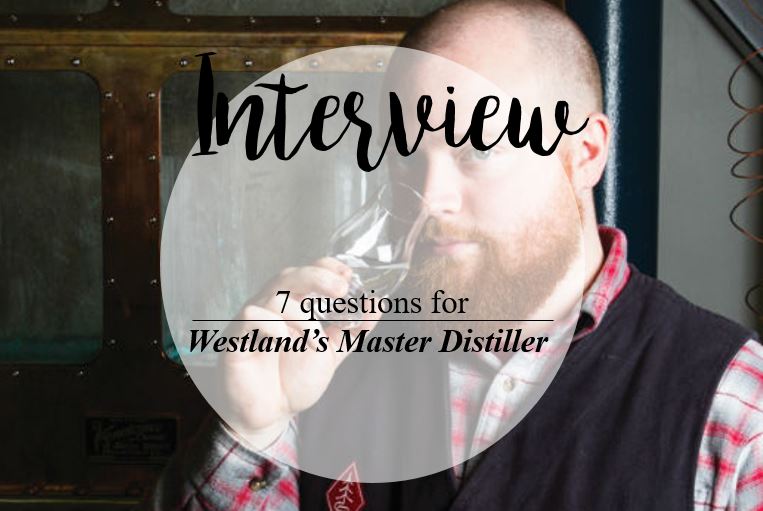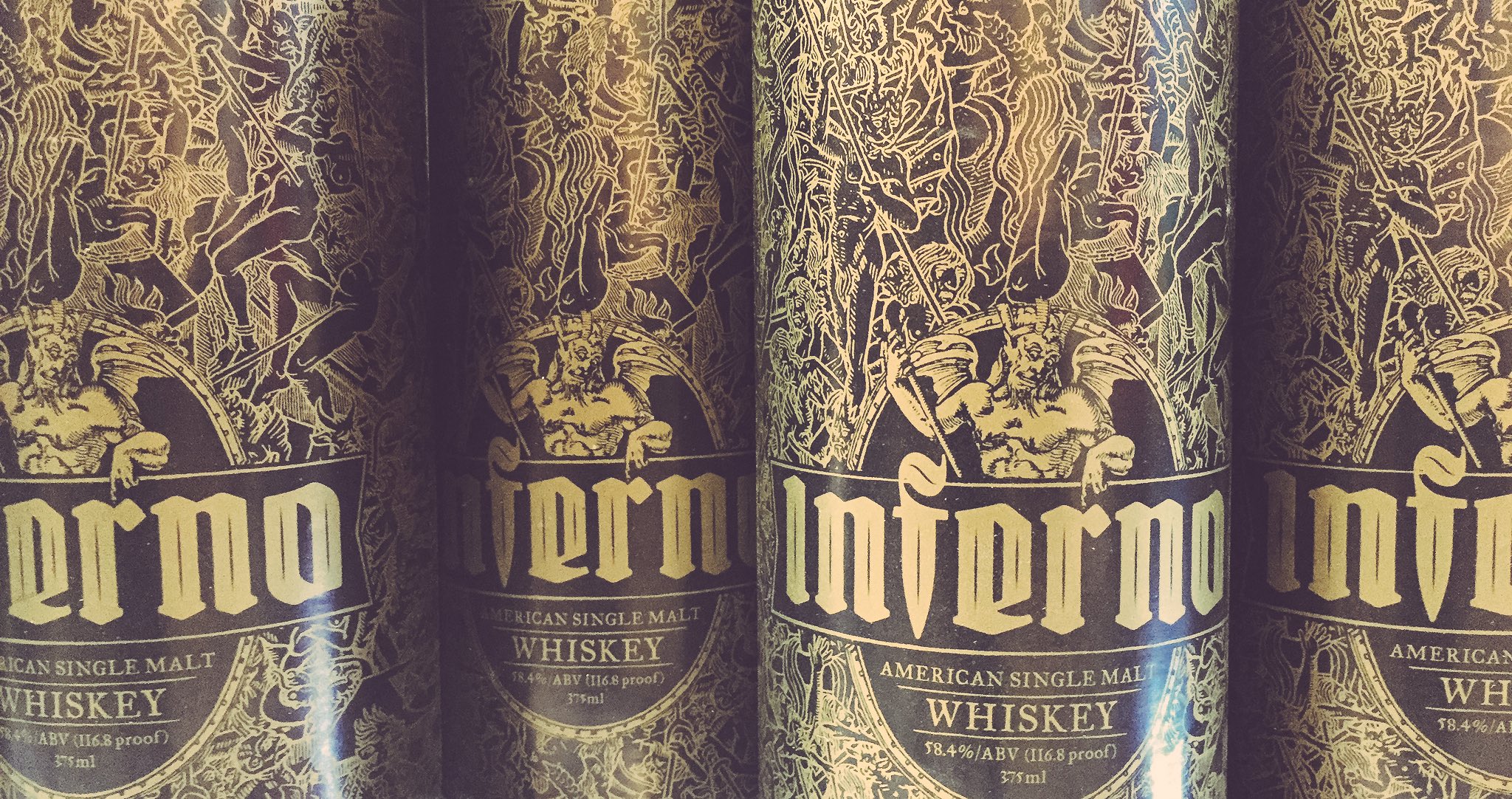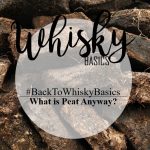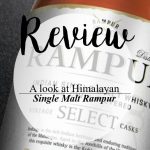Cover pic via Seattlemag
First of all, could you please tell me a bit more about yourself: where do you come from, career background etc. And how did you end up working at Westland Distillery as a Master Distiller?
I grew up south of Seattle, in Tacoma, Washington. I’ve always been fascinated by flavor, where it comes from and how to capture it. When I learned about distilling, about a fundamental way to capture flavor from really simple things, in our case barley, I was hooked. I bought my first still at 18 years old as soon as I moved into my dorm room at the University of Washington, bought my second still at age 19, dropped out of the university at 20 to more intensively study distillation in Scotland, and then co-founded Westland at age 21. I went through the Heriot-Watt program in Edinburgh, which to my knowledge is the only true source of high quality distilling education in the world.
I’m a firm believer in the idea that I will never master distillation, indeed I hope not as life would get boring :). The title merely refers to the control I have over the production process, start to finish.
What’s your personal relationship with whisk(e)y: first sipped? Any noticeable milestones on your whisk(e)y journey? Any Favourite profile/distilleries/expressions?
.
My first real experience with single malt was a glass of
Glenfiddich 12 at nineteen years old in Canada. That has resonated with me ever since because I’m a firm believer in having a degree of approachability in some whiskies in your portfolio. At the end of the day I’m a whiskey nerd and just want to share it with as many people as I can.
.
There’s been a number of milestones and we add more every day. Releasing our “American Oak” expression was very exciting because it is distinctly different from the whiskies of Scotland and really resonated with my belief that we should make truly American single malt and not just a copy of Scottish whisky in the United States. In that same vein, Garryana has been really exciting too because it is becoming increasingly obvious to everyone that the Pacific Northwest region of North America is not just capable of producing single malt with local ingredients, but that these ingredients can make some of the best single malt in the world.
.
I tend to like other distilleries that have a similar vision to what we’re doing.
Bruichladdich is a great example of an ethos similar to our own. Unfortunately I would say that the majority of the distilleries who are doing exciting things by demonstrating a true sense of place are actually outside of Scotland. I love what I’ve seen from the Australian and Swedish distilleries. I think Scotland is a victim of its own success as people are buying more single malt whisky than ever before and thus haven’t really been pushed into exploring these ideas of provenance and authenticity that the new distilleries, Westland included, are so obsessed with.
.
That being said, there is great whisky being made in Scotland, no doubt about that. Strictly referring to the the liquid, I care less about which distillery it comes from than how it is presented. Basically it comes down to the question of, “is the distillery truly speaking through these products” or not? I think chill-filtering is really sad actually, as if the brands don’t have confidence in themselves. It’s too bad because there is truly exciting liquid in there if they just let it out.
.
.
Could you describe what would be a typical day in your shoes as Westland Distillery Master Distiller?
.
A typical day in my shoes is probably not quite what people would expect. Our company has nearly 20 people involved in some capacity and it is my job to coordinate everything to put out a high-quality product with an equally appealing, authentic, story. We have a great team at Westland, top to bottom, and I’m very proud of them for all of the work they do and their commitment to the vision that we have.
.
On a typical day I’m meeting with our distillery manager to review operations, our blender to review new product releases and prototypes, and our marketing, sales and front of house teams to make sure our story is being told properly around the world. It’s interesting that in a business as old-school as whiskey that we definitely have a start-up atmosphere that feels very dynamic and creative. But this is also a characteristic of the people from this part of the world, and it’s a characteristic that is manifested in our whiskey.
.
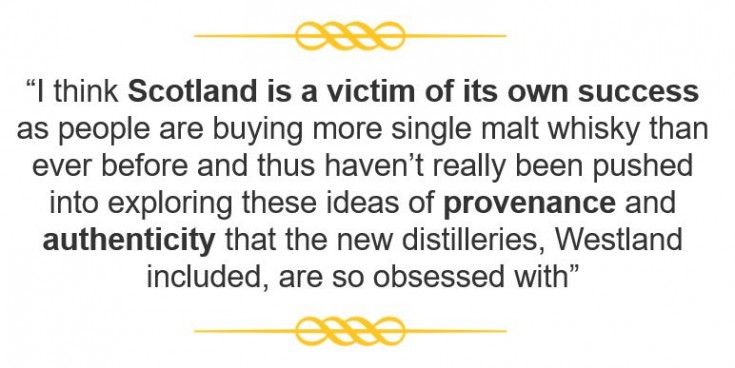
.
Craft distilling has become so huge, not a single day passes without a new distillery project or crowdfunding campaign being announced, how do you think Westland Distillery has achieved to stand out within this environment ?
.
Westland is a bit of an anomaly in the world of “craft distilling” in that we have an intense focus on just one thing: making an authentically American single malt whiskey. I think there is difficulty in the “craft” sector because people want to automatically continue the narrative from craft brewing, but it doesn’t quite work the same way. The biggest difference is that there is really exciting product out right now from almost all of the big companies. As I said earlier, I think they could go further in putting out expressions that tell a truly interesting and authentic story, but there’s no debate as to the level of quality that they are putting out. That’s a big difference compared to “big beer” forty years ago.
.
So that’s not the way we look at it at Westland. We view ourselves as makers of single malt whiskey in Seattle and try to make a whiskey as authentic to the land and the people making it as we can. On the surface of it, it is very simple. But it allows us to delve so much deeper into the topic than most other distilleries could.
.


.
If you had to choose ONE expression from Westland, which one would it be and why?
.
If I had to choose one expression it would be our “American Oak”. We sometimes call it our flagship whiskey and I believe that it is philosophically our most important one. Why? Because it most profoundly manifests this idea we have of reflecting both local agriculture and the culture of our region. It all starts with the barley, most of which is grown in Washington State. But the way that we use that barley, having some of it roasted for example, and our strain of Belgian yeast typically used in the world of brewing, and finally new, air-dried American oak casks brings an entirely new set of flavors to the table while remaining true to the idea that we have only four ingredients: malted barley, yeast, water, and casks. All of those things I just listed are innovations in the world of single malt, and the culture of the US, especially Seattle, is rooted in innovative thinking. How else would we all have gotten here?
.
I love the tradition in Scottish whisky, but to make a truly authentic whiskey we must recognize that that tradition belongs to them, not to us. We have a great deal of respect for it, which is why we have our “Peated” and “Sherry Wood” expressions, but fundamentally our culture is different, highly valuing innovative. So our quest to pursue authenticity really loops back to having our most important whiskey also be our most innovative one, “American Oak”.
.
Westland has been experimenting with local wood lately (Garrayana – Oregon Oak): do you think “terroir” in whisk(e)y is a real thing? How do you think Terroir influences spirits, and to which extent?
.
I absolutely believe “terroir” in whiskey is a real thing, it just hasn’t been explored. Here is the most exciting thing in the world of whiskey right now: as I said earlier there is great whisky being made around the world right now, yet many of the most exciting concepts haven’t even been developed. Almost all of the barley in Scottish whiskies is the same varietal, malted the same way and produced in a way that eliminates terroir, not showcasing it. Think about how boring the world of wine would be if everyone used the same varietal of grape! Even if it was your favorite grape varietal and it was really well made, you are missing out on so much more.
.
This idea is one of the things Westland was founded on. Why is no one using roasted malts in Scotland if brewers have been doing it for hundreds of years? Why can’t we use one of the thousands (literally) of varietals of barley out there that have more flavor at the expense of yield? Why can’t we explore farm to farm climate and soil differences? What about vintage characteristics?
.
I believe so strongly in this idea, but one of the difficult things is you need other people to help you explore. You need maltsters, farmers, and breeders, not to mention an interested public who would actually be interested in these products and buy them. We have all of these things right now in Washington State and its incredibly, incredibly exciting. Westland has now laid down casks of whiskey with new, unseen barley varietals, barley varietals grown in different regions, local peat, local oak, and the list goes on. The hardest part about it is that you guys won’t be able to see some of it for years!
.
.
I have to ask: WTF with Inferno?! Could you please explain how and why you came up with this Tabasco-finished expression? Do you think there’s still a lot to explore when it comes to “cask finishes” ? Any new expriment of this kind planned (we appreciate a bit of teasing 😉 )?
.
Inferno was a ton of fun and it was our second annual April Fools Day release. We take our work seriously at Westland, but it’s ok to have some fun and make sure we don’t take ourselves too seriously. Inferno was 100% matured in a Tabasco cask and we wanted to see what would happen if we put whiskey in there. It was totally empty when we got it so we had no idea what would happen. The result, well it speaks for itself.
.
But from this kind of thinking you end up shaking the tree a bit, makes you question why things are done a certain way. A great example of this is sherry cask maturation, which obviously has a history with Scottish whisky due in part to economics and trade of past periods. How can we do the same thing today? In Seattle, many breweries are aging their beers in casks, should we be using more of these? Inferno was a fun way to probe into some of these ideas while not taking it all so seriously.
.
I don’t want to give too much away, but suffice it to say that we haven’t run out of fun ideas yet. 🙂
.
.
How do you see the future for Westland? How do you picture the distillery in 5/10 years time? A crazy dream you’d like to achieve?
.
The future of Westland is bright. I’ve just gotten back from this big trip to Europe and it’s been so exciting to see that our message is a global one. Fortunately, not just for us but I believe for everyone in the world of food and beverage, consumers are valuing authenticity again all over the world. We’re really confident in our message and the way we make our products because we know that they are made with truth in mind. The best story is a true story.
.
There is so much more to be told about Westland and we’ve got a couple of exciting projects to be released in 2017 that will explore these ideas in a bit more depth. We are very interested in exploring “triple bottom line” type ideas, where we sell a product to not just make a profit but to also ensure that everyone in the chain gets a fair wage and that we take care of the land we call home. A great example is what’s happening in the Skagit Valley (about 60 miles north of Seattle) right now.
.
Many of these farmers have been growing barley for decades as a way to help restore their soil after more economically profitable crop production as part of natural crop rotations. The problem has been that they could only sell it as cattle feed, if they could sell it at all. Now, with the help of local maltsters, we can have these farmers grow really fantastic, flavor-driven varietals that will help to restore their soil and pay them a premium for them to ensure that farming remains an economically viable profession for years to come. Fantastic flavor, positive environmental impact, and our partners making a decent living. It’s a true win-win-win.
.
Over the next 5-10 years I hope that the story of what Westland is trying to achieve (and crucially, why) is known by everyone within the world of single malt whiskey. We are going to continue to push forward on some of these ideas I’ve hinted at above and demonstrate them through exciting new whiskies. I hope to see American single malt whiskies, not just Westland, being consumed the world over. And we’re going to continue having fun making great, authentic whiskey.
.
Please add social media services by going to 'Theme Options > Social > Add share services'
